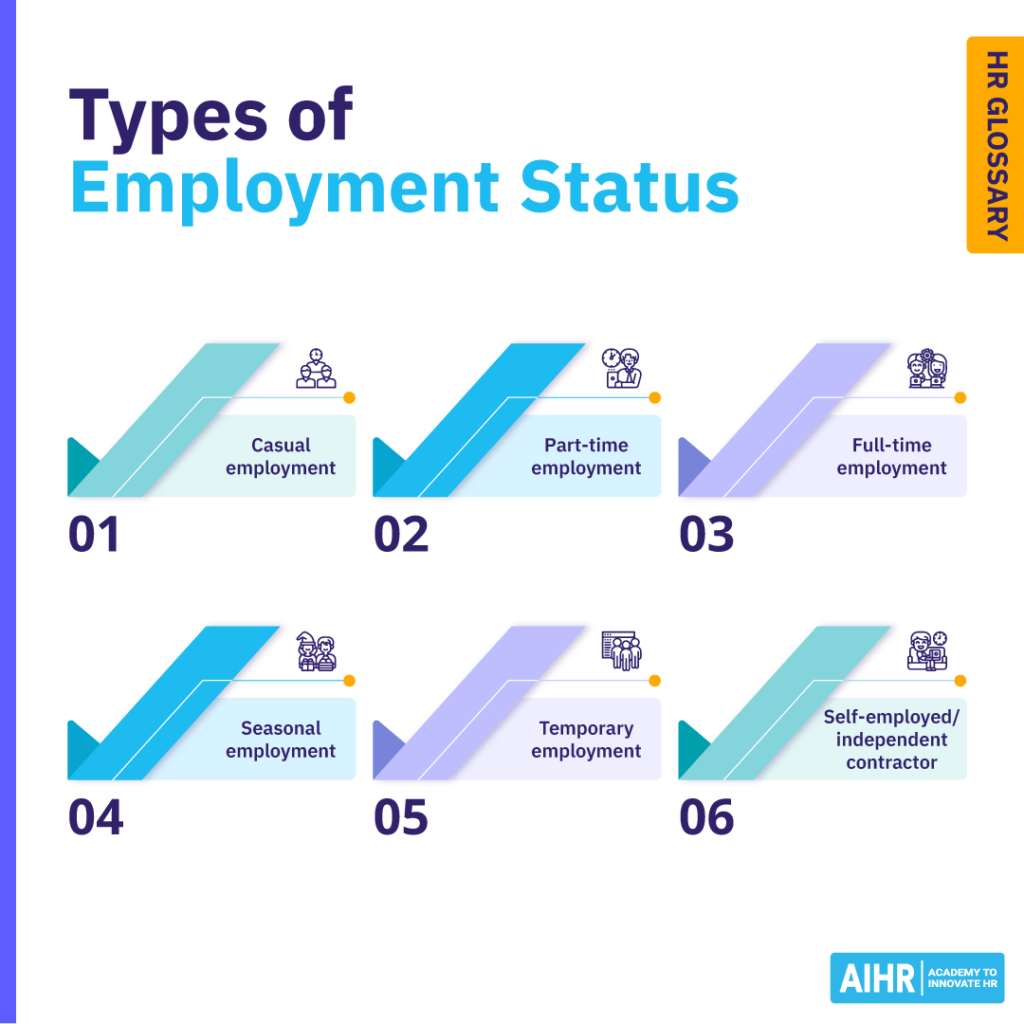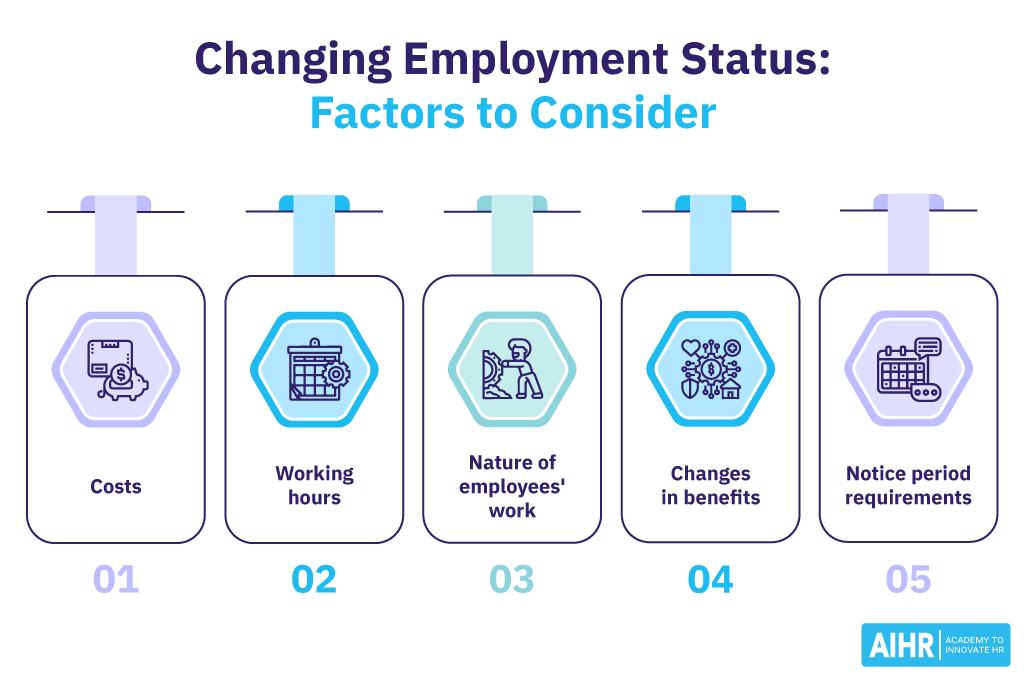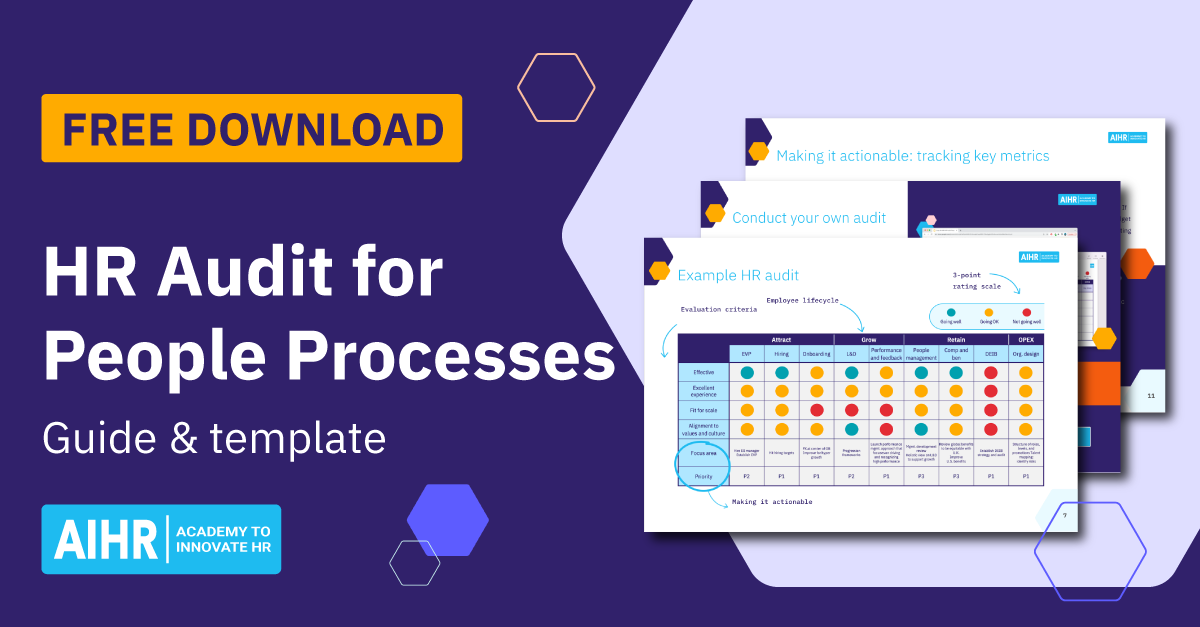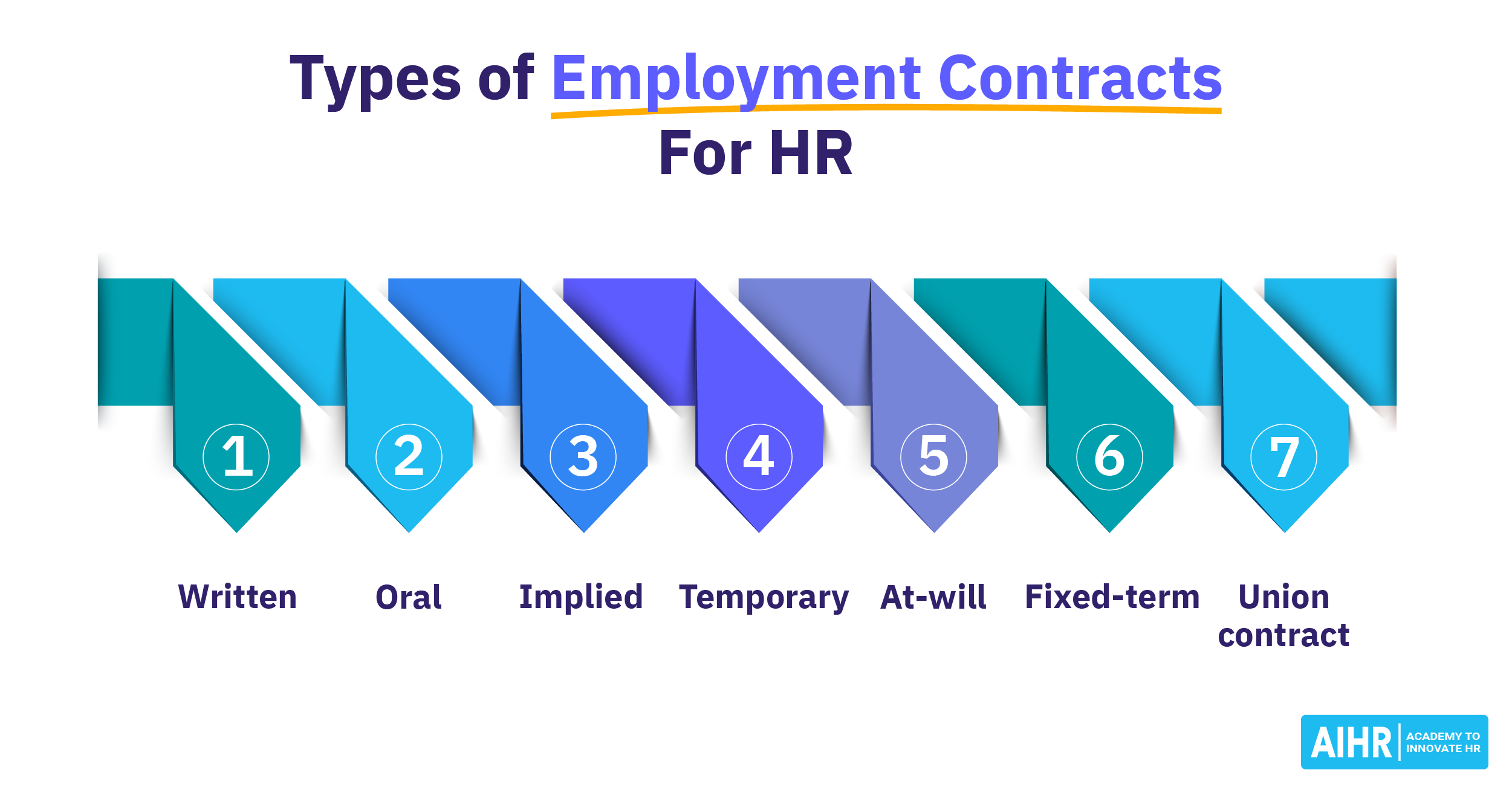Employment Status
What is employment status?
Employment status is the classification of an individual’s working relationship with an organization. It defines their rights, responsibilities, and the terms under which they work, including their entitlement to benefits and protections under labor laws.
Why is it important to understand employment status?
Understanding employment status is essential for both employers and employees because it defines the nature of their relationship, rights, and obligations. For employers, it ensures compliance with labor laws, tax regulations, and workplace protections. Misclassifying employees as independent contractors, for example, can lead to legal disputes, fines, and reputational damage.
For employees, knowing their status clarifies their entitlements, such as access to benefits, job protections, and tax responsibilities. Employees who are unclear about their classification may miss out on rights like overtime pay, minimum wage, or unemployment benefits.
In short, employment status affects every aspect of the working relationship, from legal compliance to financial security, making it a cornerstone of workplace dynamics.
Types of employment status
When hiring, there are many types of work arrangements an employer and employee can agree on, including:
1. Casual employment
Casual employment is a work arrangement where an employee is hired on an as-needed basis without any guarantee of ongoing work. In this type of arrangement, the employer is not obligated to provide consistent hours, and the employee has no expectation of future work.
Casual employees are paid for the hours they work, often at a higher hourly rate to compensate for the lack of benefits such as paid leave. While the employment relationship is intermittent, casual workers may still have basic legal protections, such as those related to discrimination or workplace safety. However, this also depends on the jurisdiction in which they work.
2. Part-time employment
According to the US Bureau of Labor Statistics, part-time employment involves working fewer hours than full-time employees, typically under 34 hours per week. These employees are often paid hourly and may or may not be eligible for benefits like health insurance, depending on the company’s policies and the local labor laws.
Part-time roles offer flexibility for both employees and employers. Employees can balance other commitments, while employers can adjust staffing levels based on demand.
3. Full-time employment
Full-time employment refers to a permanent arrangement where an employee typically works 35 to 40 hours per week. Full-time employees often receive a salary or hourly pay and are eligible for a range of benefits, such as health insurance, retirement plans, and paid time off (PTO).
These roles usually come with a formal employment contract and provide stability, making them highly desirable for job seekers.

4. Seasonal employment
Seasonal employment is temporary work tied to specific times of the year or peak demand periods. Industries that commonly use seasonal employment include retail during holidays, agriculture during harvests, and hospitality during tourist seasons.
Seasonal workers are hired for limited durations and may not qualify for the same benefits or protections as full-time employees. However, they are still entitled to basic rights, such as minimum wage and workplace safety protections.
5. Temporary employment
Temporary employment involves hiring workers for a specific short-term period or project. Companies may directly hire these employees or do so through staffing agencies. Temporary roles usually fill immediate staffing needs, such as covering employee leave or managing peak workloads.
Temporary employees typically receive hourly wages but may not qualify for benefits unless stipulated in their contract.
6. Self-employed/independent contractor
Self-employed individuals or independent contractors work for themselves, offering services to clients or businesses under contracts. They are responsible for their own taxes and benefits and do not receive employee entitlements like paid leave or employer-sponsored health insurance.
This arrangement provides flexibility for both parties, as employers are not bound by the obligations of traditional employment relationships.
How does employment status differ around the globe?
Employment status in the U.S.
In the U.S., employment status broadly describes the type of working arrangement between an employer and employee. This can include classifications like part-time, full-time, contract, or apprentice.
Unlike in some countries, the term “employment status” is not rigidly defined under U.S. labor laws. Instead, the laws mostly focus on the classification of workers as either employees or independent contractors, which impacts tax obligations, benefits, and legal protections. For employees, federal laws like the Fair Labor Standards Act (FLSA) ensure consistent rights, such as minimum wage and overtime pay, regardless of their specific employment classification.
Employment status in Canada
In Canada, employment status goes beyond a written contract and considers the overall nature of the working relationship between an employer and employee. The Canada Revenue Agency (CRA) evaluates factors such as control over work, financial dependence, and ownership of tools to determine whether someone is an:
- Employee: A person hired to work under the direction and control of an employer, entitled to benefits and protections.
- Independent contractor: A self-employed individual who provides services to a company but operates as their own business, without employee entitlements.
This distinction significantly impacts tax responsibilities, eligibility for benefits, and workplace protections.
Employment status in other countries
In the U.K. and many European countries, employment status is explicitly defined and closely tied to labor laws. The classification affects an individual’s rights, benefits, and protections. Employees typically fall into three main categories:
- Worker: Engaged by a company to perform specific tasks, often on a casual or seasonal basis. They have limited rights, such as minimum wage and holiday pay, but are not entitled to full employee benefits.
- Employee: Directly employed under a contract, with access to comprehensive rights like paid leave, notice periods, and redundancy pay.
- Self-employed: Independent professionals or contractors running their own businesses. They are responsible for filing their own taxes and do not receive employment benefits.
European countries generally have stricter regulations on employment status to ensure compliance and protection for workers, with variations based on local laws.
When would an employment status change?
An employee’s employment status isn’t always fixed and can shift over time. These changes may be initiated by the employer or requested by the employee. Regardless of the source, it’s crucial for HR professionals to monitor these shifts carefully to make informed decisions, implement changes promptly, and remain compliant with legal requirements.
Common scenarios that might lead to a change in employment status include:
- Transitioning between full-time and part-time roles
- Termination of employment
- Taking a leave of absence
- Resignation
- Retirement
- Layoff.

Changing employment status: What HR should consider
Changing an employee’s employment status often means altering their benefit eligibility, work hours, or classification. This can impact both the employee and the organization, affecting costs, productivity, and compliance requirements.
HR should carefully consider the following:
- Costs: Full-time employees generally cost more due to benefits like health insurance and retirement plans. Evaluate whether the change aligns with your organization’s budget without compromising financial stability.
- Working hours: If your organization’s workload fluctuates frequently, part-time or casual employees may better suit your needs. Match employment status to the demands of each role.
- Nature of employees’ work: If the nature of an employee’s work remains unchanged, reassess whether a status change is necessary. Unwarranted shifts can lead to dissatisfaction or inefficiencies.
- Changes in benefits: Changes in employment status often impact eligibility for benefits. Consult state, local, and organizational policies to ensure compliance with laws governing benefits and employment.
- Notice period requirements: Some jurisdictions require employers to provide advance notice of employment status changes. Ensure you meet these requirements to maintain transparency and avoid potential legal disputes.
FAQ
Employment status refers to the classification of a worker’s relationship with an employer, determining their rights, responsibilities, and access to benefits under labor laws. Common types include employees, independent contractors, and temporary workers.
“Other” in employment status refers to arrangements that don’t fit standard categories like full-time, part-time, or contractor. It might include freelance jobs, gig work, volunteer roles, or unique agreements defined by the organization.









